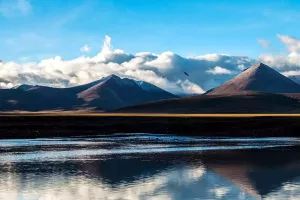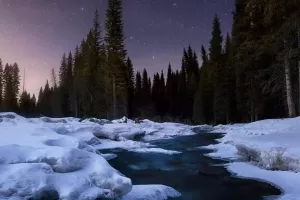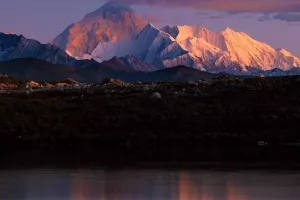The significance of Mount Rainier in the minds of Seattle people is what Mount Fuji is to the Japanese and the Himalayas to the Nepalese. The stylish city of Seattle has a unique charm and style because of Mount Rainier.
Rainier Snow Mountain is the highest peak in the North American continent except Alaska, the snow mountain with the densest distribution of glaciers in North America, an active volcano, and the center of a 240,000-hectare national forest park. This huge snow-capped mountain has its own microclimate system, creating a day with four seasons: from the cold glaciers on the mountainside, to the alpine meadows, and the magical experience of the moist and mild temperate rainforest at the foot of the mountain.
Seattle is only 120 kilometers away. After a two-hour drive, you can stay away from the hustle and bustle of the city and be in the cool virgin forest, enjoying the magic of Rainier Snow Mountain. Rainier Forest Park has very complete roads and service facilities. It allows you to see the emerald green streams under the deep canyons, colorful wildflowers all over the mountains and plains, exquisite and elegant mountain waterfalls and springs, unpredictable alpine lakes and virgin forests everywhere. During this period, you may be lucky enough to encounter real mountain hosts such as elk, marmot and even black bear, making this trip a rewarding experience.
June, July and August are wildflower seasons on Mount Rainier. Since June, when the snow on the mountainside has not yet melted, the Lily of the Snow Mountain can't wait to stick its head out from the place where the snow is slightly thin, crystal clear and beautiful. In July and August, wild flowers all over the mountains are in full bloom and colorful, setting off the majestic snow-capped mountains and clear blue sky, which is definitely a true portrayal of heaven.
No matter what season you come to Mount Rainier, if you want to roll and scatter in the snow, you will find your own piece of snow. After all, Mount Rainier receives an average of 16 meters of snow each year. If you visit before June and after November every year, you might as well prepare a pair of snowshoes or a simple plastic snow plow, and you can follow the park ranger to explore the secluded areas in the snow. Or just sit and plough down the hillside and have fun with the kids. Even on a hot summer day, if you don't mind taking a few extra steps, you can always find a patch of snow near Paradise to have a good time. If you're a big fan of skiing, take your snowboard to Camp Muir and slide down the slopes.
Although Mount Rainier is an active volcano, the huge snowfall over the years has created abundant glacial resources. In summer, the snow on the surface melts, the glaciers are exposed, and blue cracks criss-cross, as if scarred. Snow Mountain's North Slope Visitor Center Sunrise is closer to the summit, and the views of the snow-capped mountains and glaciers are more spectacular and clear. Especially on the Emmons Vista trail, the snow-capped mountains in front of you hang in the air, and the glaciers are layered and delicate, and you can reach them.
Climbing Tips:
1. Summer is the busiest time in Rainier Forest Park. If you only have time to visit on weekends, be sure to leave early, otherwise you may only park far away when you arrive at Paradise, and you have to walk for a long time to get to the visitor center.
2. The wildflowers of Paradise and the spectacular glaciers of Sunrise are all well worth a visit. Fortunately, the road between the two scenic spots is not too far. If you are not in a hurry, you must visit both.
3. In summer, there are many activities in the visitor center in Rainier Forest Park. Every day, park administrators lead the tour together, and there are also exploration activities for children to learn about volcanoes, glaciers, animals and plants. Be sure to check out the visitor center!
4. Rainier's beauty must be experienced in person. Wear comfortable shoes and be prepared to walk around. There will be many surprises waiting for you.


